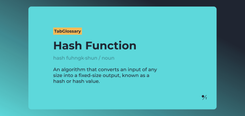What Is a Take-Profit Order? Take-Profit Limit Order Usage in Trading
A take profit order is a type of exchange operation which allows traders to execute a trade when the underlying asset reaches a price defined by them.
What is a take profit order?
The basic take profit order (also referred to as a TP order) forms a key part of portfolio management. Traders can use it to lock in profits on a trade in their absence by scheduling it to execute once the asset involved hits their desired price.
There are two main types of such an order commonly used on exchanges: take profit and take profit limit. More information on the latter further on.
Take profit orders explained
Traders need to manage risk on their positions but cannot do that “live” themselves by monitoring the market all the time. Using technical analysis, they may see opportunities for an asset to increase in price versus another and want to take advantage of that potential growth. They thus use tools such as take profit orders as an attempt to lock in potential profits. The take profit order allows them to trade an asset once its market hits a price they choose (for example based on prior analysis). While the price may not be finished increasing at their chosen price, take profit at least allows them to secure profits that they may otherwise miss.
How does a take profit order work?
A take profit order works by setting a “profit price” in advance. This is chosen by the trader and defines when a trade should execute.
A profit price can be a specific price point or bear some relation to the current spot price, e.g. be 15% or $10 above the spot price. As such, the trader not only selects a price point, but also whether that price point is conditioned by the spot price.
Once the asset reaches the profit price, the take profit order triggers a command to execute the trade via a standard market order. The trade may or may not execute exactly at the profit price — that depends on the volatility of the market at the time.

For added control (but also complexity), there is a second type of take profit order: take profit limit. In this instance, the profit price triggers a limit order instead of a market order. The exchange places the limit order once the profit price is hit, and just like before, the trader sets the parameters for that limit order. Take profit limit orders are useful for ensuring the price at which the trade is executed is not wildly different from a trader’s target (or the profit price).
Pros and cons of take profit orders
- Improves risk management by locking in profit potential
- Avoids the risk of trading on emotion based on short-term market volatility.
- Works well as part of a planned trading strategy.
- Take profit limit gives added control over position management.
- Profitability heavily depends on the trader’s own expertise as the trader sets the profit price.
- Long-term traders face problems finding an appropriate profit price far in advance.
- The profit price might not hit and the profit potential may be partially or entirely missed.
- Take profit limit introduces even more complexity, pressure on the trader and the chance of failed execution.
When to use stop loss and take profit orders
Take profit orders allow traders to lock in (to the best of their ability) profits on a trade, even if they are not physically present to monitor the market. Stop loss orders effectively take care of the other side of the risk bet; they act as a safety net to avoid losing any gains. The two order types can thus work in tandem with one another as part of a trading strategy, limiting the scope for volatility to scupper plans for a particular asset trade.
Take profit order example
A trader has bought Ethereum (ETH) with Bitcoin (BTC) and plans to lock in profits as the BTC/ETH pair gains. The BTC/ETH pair traded at 13 ETH at the time of the trade, but the trader thinks that 13.50 is a suitable exit point to lock in profits. They thus set a take profit order with a profit price of 13.50 ETH. The market hits that level, triggering a market sell order. The trader secures profit from the BTC/ETH trade.
Take profit order FAQs
How does a take profit limit order work?
Take profit limit orders limit the impact of volatility or related circumstances on a take profit order once its profit price is hit. They do so by triggering a limit order instead of a simple market order at the profit price. This allows for greater control over how and when profit on a trade is locked in.
How do you set up a take profit order?
Major exchanges feature take profit as one of their basic order types. In the order form, select take profit from the list. Based on prior understanding of the market, enter the profit price (and the limit price in the case of take profit limit orders).
How do take profit and stop loss orders work?
Take profit and stop loss orders work by maximizing profit potential and minimizing loss potential, respectively. They can work together in order to ensure a trader is shielded from potential market volatility.
How do you take profit from trading?
Taking profit, as its name suggests, is the main aim of take profit orders. If the profit price is hit, unless major volatility hits at the same time, the desired profits will likely be locked in. However, much depends on the trader’s understanding of the market — they set the profit price to start with, and human error may result in the price either being too high or too low. As such, the profit price might not hit, or the majority of profit potential may be missed from a trade executing at too low a price relative to spot.




